"Main-Taunus-Zentrum"
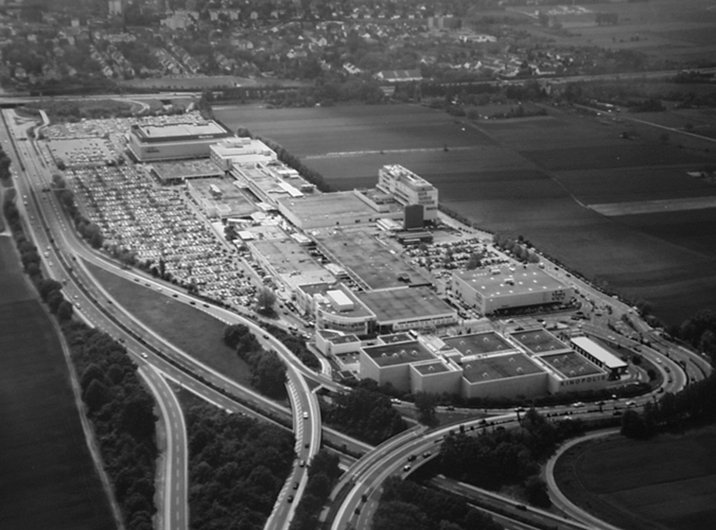
Main-Taunus-Zentrum
Urban interventions
Project, 2003, Frankfurt / Main, Germany
I worked on the project: 2003
My responsibilities: The project was developed in a team of three, during the time at Bauhaus-University in Weimar, Germany
At the time of its opening in 1964, the Main-Taunus-Zentrum was Germany’s first non-integrated shopping center considered to be greenfield development. Built with highway access directly outside the Frankfurt city border, it stands to this day for the heavy competition between downtown and suburbia. With a sales area of 80000m² and an average of over 30000 customers each day, it still is one of the biggest and most successful centers in Germany. It offers work for more than 1500 people. Its specialty still is the alignment of the shops along an outside street fully exposed to wind and weather.
With the long lasting lament by the inner cities regarding their bleeding through greenfield development, mainly older suburban shopping centers have been experiencing difficulties for some time; their monofunctional, architecturally unambitious structures no longer correspond to the needs of a “fun and leisure society.”
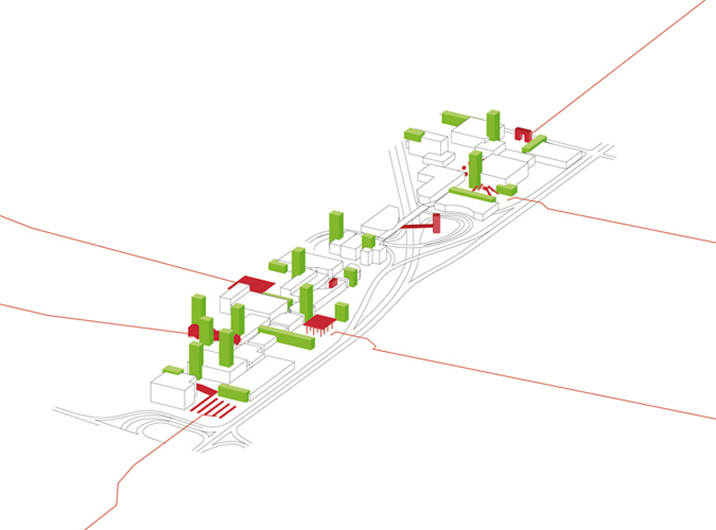
Qualification of the urban sprawl
Growth of the center at its place, addition and conversion of its structure. A qualification of the spaces and densification of the structure leads to an increase in value of the former contour-less spaces. Since by now the areas surrounding the center are under environmental protection, the MTZ can no longer expand, but has to increase its productivity on the present area.
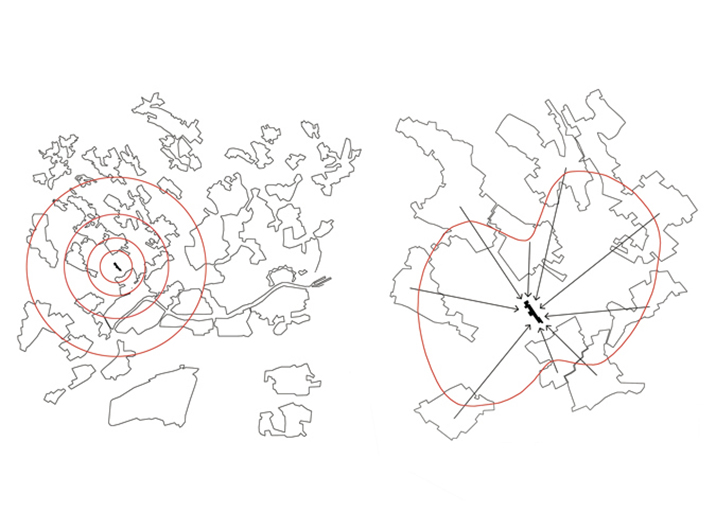
Between here and nowhere
The MTZ lies on the westerly border of Frankfurt/Main. With approximately 650000 inhabitants Frankfurt is not an especially big city, but nevertheless is one of the economically strongest regions in Europe. The city itself only grows slightly, its periphery, on the other hand, grows very quickly. The growth of used area in the past years is especially enormous, the relation of free space to space covered with buildings is inverted in some parts so that nature exists in only in the form of islands within the urban sprawl.
Two strategies are proposed: 1. Strengthen the MTZ by functional enrichment and upgrade to a real center in the urban sprawl, 2. Contextualize the MTZ with a newly created “route of neighbourhoods.”
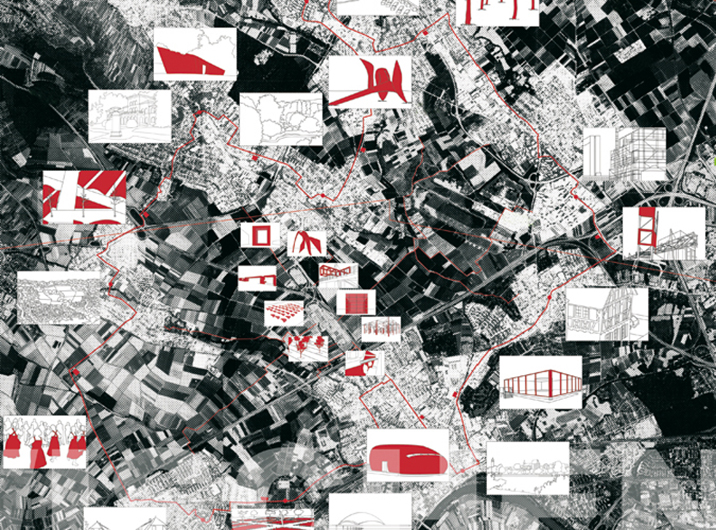
Route of neighbourhoods
The contextualization of the MTZ in its neighborhood aims to live up to the actual character of the center – to convert the site from a placeless, fictional island on a highway intersection to a place locally connected with architectural quality and an own identity. In fact, all nine communities around the shopping center use it like their own city center. Despite the closeness, one still has to arrive by car. The Route of neighborhoods unites the 9 communities into a “mini-region.” Pedestrian and bicycle paths connect the center with the communities and the communities with each other. A “connector” will be installed for each community’s route to the MTZ which will have its counterpart in one of the exterior spaces of the center where it connects via a path. The once economically-growing communities that have now degenerated to dormitory towns (the two villages Sulzbach and Eschborn managed to convert by means of an aggressive low tax policy into “economic villages” with headquarters of international corporations; both villages have more than doubled the amount of work places compared to its inhabitants) are to find a new identity within the city’s region.
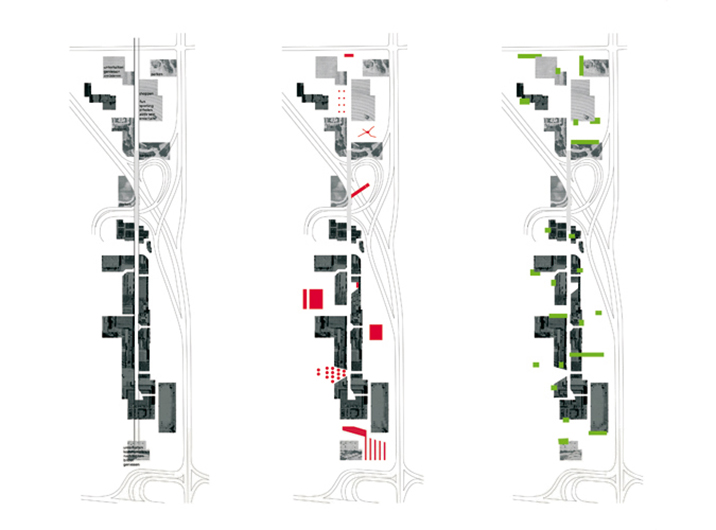
Three layers of transformation
1. Further extension and densification of the center along its characteristic axis, with new large-scale attractions and functions, 2. creation of public open space with the “connectors” from the Route of neighborhoods, and by that a new orientation of the formerly introverted center towards the exterior space, 3. a second generation of growth, that docks to the new open spaces containing functions that specifically are not genuine shopping center functions. Together with the connectors, those new modules build for the first time a public space that embraces the natural space outside the center. They differ from the classical large-scale structures not only by their dimensions but also by their functions. They are no traffic generators and were not desired before, but they are irreplaceable for a vitalization distributed over the whole day: housing, offices, cafés, restaurants, hotels, supply of services.
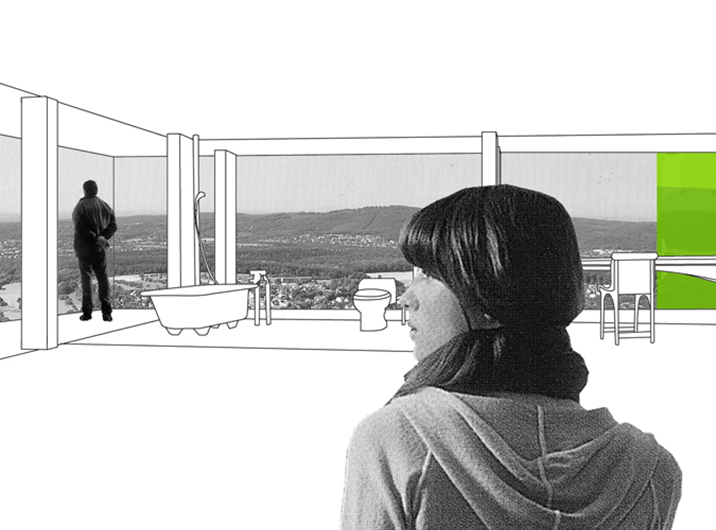
Modules
The new modules of different size and capacity allow for the accentuation of some places by tower of moderate height and slender dimensions. In the Frankfurt region, these could be used for strongly needed housing with excellent views over the surrounding landscape and the Taunus.
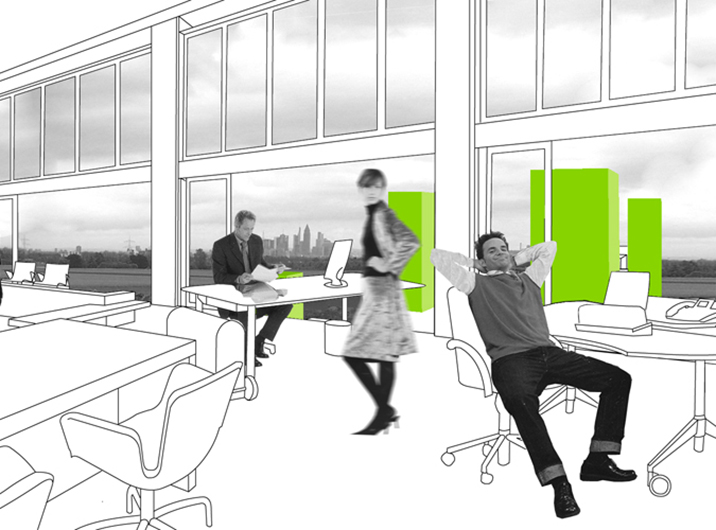
Modules
Offices could also be installed in the towers – here with a view to the skyline of Frankfurt. Consequently, office space does not extend any more of the commercial areas of the surrounding communities, and thus does not waste agricultural land. Instead, the office spaces can be erected here with ease and minimal encroachment on potential greenspace.
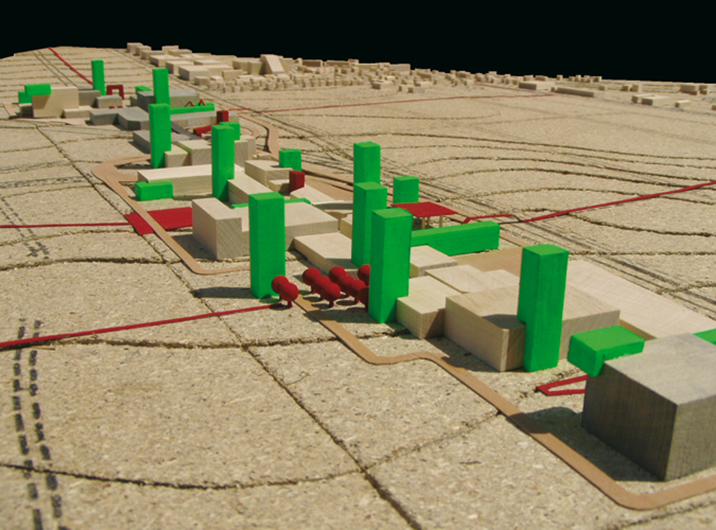
Urban model 1:1000
The new center in the periphery develops a uniqueness and gives character to a place that normally is not taken account of while crossing the periphery in the course of one’s daily routine. The three layers of transformation can be laid over the center’s structure for a step-by-step development over a longer time period and only if needed.
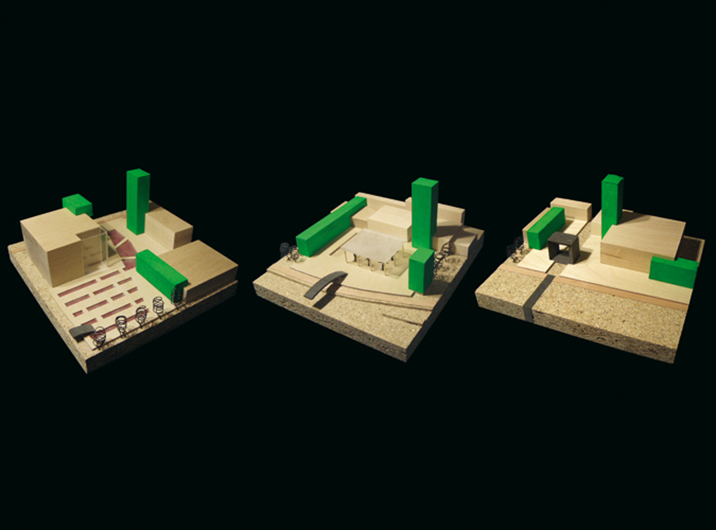
Detail models
show the newly created exterior spaces with the paths. New modules and connectors create a public open space with relation to the surrounding landscape.
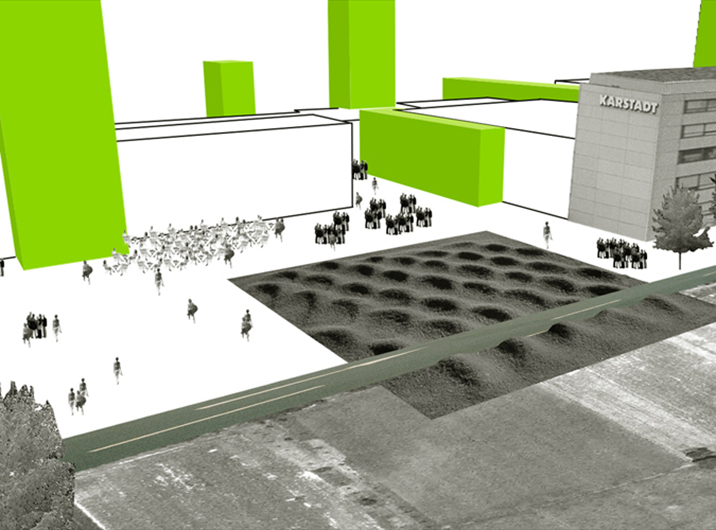
Center and fields
New exterior space with amenity value can be created along the borders of the center, which were formerly occupied by parking lots.
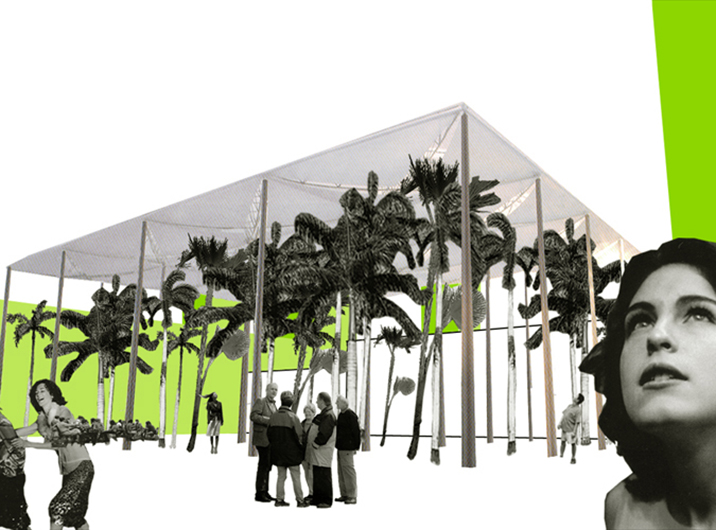
Urban space
Broadening the interior shopping street by attached public open space.
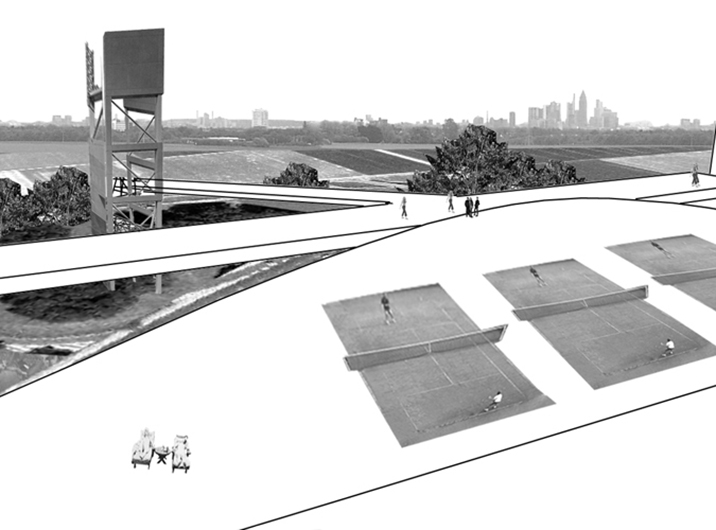
Connected island
A new densified and multifunctional center will be developed without harming the surrounding natural space.